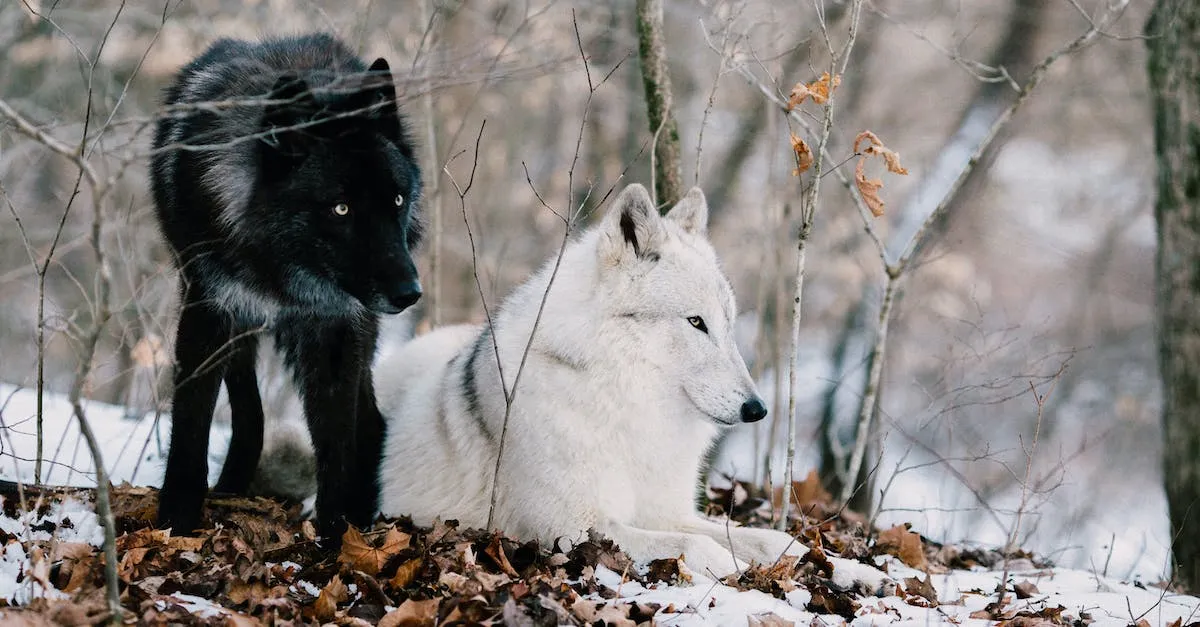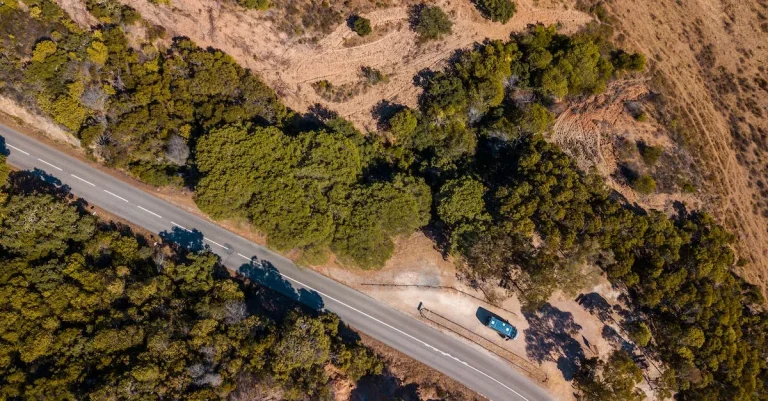Are There Wolves In Massachusetts?
The howl of the wolf is an iconic sound of the wilderness. But could this iconic animal also be found in the more populated state of Massachusetts? While wolves once roamed New England, their fate here shares similarities with their decline across much of the United States over the past two centuries.
If you’re short on time, here’s a quick answer to your question: There are currently no wild wolves living in Massachusetts, but occasional lone dispersed wolves have very rarely appeared in the state in modern times.
In this comprehensive guide, we will explore the history of the wolf in Massachusetts, discuss current policies and conservation efforts, and look at reasons why wolves have struggle to return and reestablish pack activity in the state.
Former Range and Extinction of Wolves in Massachusetts
Gray wolves were originally common in Massachusetts, inhabiting various regions of the state. These majestic creatures were once a part of the natural ecosystem and played a vital role in maintaining a balanced environment.
They roamed freely across the forests and open lands, coexisting with other native species.
Gray wolves originally common
Historical records and archaeological evidence suggest that gray wolves were prevalent in Massachusetts during the early colonial period. They were known to inhabit areas such as the Berkshire Mountains, Central Massachusetts, and the coastal regions.
These wolves thrived in the diverse ecosystems, adapting to different landscapes and hunting a variety of prey.
The presence of gray wolves in Massachusetts was documented by early European settlers who encountered these magnificent creatures. They observed the wolves hunting in packs, exhibiting their extraordinary hunting skills and social structures.
Native American tribes also had a profound connection with wolves and incorporated their symbolism into their cultural beliefs.
Persecution and deforestation led to extinction
Unfortunately, the once-thriving population of gray wolves in Massachusetts experienced a drastic decline due to human activities. As settlers expanded their territories and engaged in deforestation, the wolves lost their natural habitat and prey.
This led to increased conflicts between humans and wolves, with farmers perceiving them as a threat to their livestock.
The persecution of wolves intensified as bounty programs were implemented, offering rewards for their eradication. Tragically, this led to widespread hunting and trapping, resulting in a significant decrease in the wolf population.
By the mid-19th century, the gray wolf was declared extinct in Massachusetts.
It is important to note that efforts are being made to reintroduce wolves in certain regions of North America, including nearby states. However, the return of wolves to Massachusetts is still uncertain.
The state continues to prioritize conservation efforts and aims to restore the natural balance of its ecosystems.
To learn more about the history and conservation of wolves in Massachusetts, you can visit the Massachusetts Division of Fisheries and Wildlife website.
Modern Wolf Sightings in Massachusetts
Wolves are majestic creatures that have long captured our imagination. While they once roamed freely across North America, including the state of Massachusetts, their populations were decimated by hunting and habitat loss.
However, in recent years, there have been rare sightings of wolves in the state, sparking excitement and curiosity among residents and wildlife enthusiasts.
Rare solitary wolf visitors
Although Massachusetts is not home to a resident wolf population, individual wolves have been known to wander into the state. These solitary visitors are often young wolves in search of new territories as they disperse from their birth packs.
These sightings are relatively rare, but when they do occur, they create a sense of wonder and awe.
One notable example is the famous “Wandering Wolf,” also known as OR-7, who captured the attention of people across the country. In 2012, OR-7 traveled hundreds of miles from his original pack in Oregon and made his way into northern California and eventually crossed over into southwestern Oregon.
His journey continued as he ventured into northeastern California, and in 2013, he crossed the state line into western Nevada. OR-7’s remarkable journey demonstrates the incredible ability of wolves to disperse and explore new territories.
Unlikely to establish territories
While these occasional wolf sightings in Massachusetts are exciting, it is highly unlikely that wolves will establish permanent territories in the state. The landscape and availability of suitable habitats are not conducive to supporting a sustainable wolf population.
Massachusetts is densely populated, with a mix of urban, suburban, and agricultural areas, leaving limited space for large predators like wolves.
Furthermore, the state lacks the large tracts of wilderness and prey populations necessary for wolves to thrive. Wolves primarily feed on ungulates such as deer and elk, and Massachusetts has a relatively small deer population compared to other states.
The scarcity of suitable prey and the fragmented nature of the landscape make it challenging for wolves to establish stable populations in the state.
It’s important to note that occasional wolf sightings should not be cause for alarm. Wolves are typically shy and elusive creatures that pose minimal threat to humans. In fact, they play a vital role in maintaining healthy ecosystems by regulating prey populations and promoting biodiversity.
If you’re interested in learning more about wolves and their conservation efforts, you can visit websites like International Wolf Center or Defenders of Wildlife. These organizations provide valuable information on wolves’ biology, behavior, and conservation initiatives.
Reintroduction Possibilities and Challenges in Massachusetts
Massachusetts, with its diverse ecosystem and abundant natural resources, has been a topic of discussion when it comes to the reintroduction of wolves. While the idea of bringing back this iconic species may seem enticing to some, there are several challenges and oppositions that need to be addressed before any reintroduction efforts can take place.
Opposition from some interests
One of the main challenges in reintroducing wolves to Massachusetts is the opposition from certain interest groups. Farmers and ranchers, for example, may be concerned about the potential threat that wolves pose to their livestock.
This opposition is understandable, as wolves are known to occasionally prey on domestic animals. To address these concerns, it is crucial to implement effective management practices, such as providing compensation for any losses and implementing non-lethal deterrents, to minimize conflicts between wolves and human activities.
Furthermore, hunters and outdoor enthusiasts may also voice their concerns about the presence of wolves. They may worry about the impact on game populations and recreational activities. However, it is important to note that wolves play a crucial role in maintaining healthy ecosystems by regulating prey populations and promoting biodiversity.
Education and outreach efforts can help dispel misconceptions and promote coexistence between wolves and human activities.
Suitable habitat limitations
Another challenge in reintroducing wolves to Massachusetts is the availability of suitable habitat. Wolves require large areas of contiguous wilderness to thrive, and finding such areas in a densely populated state like Massachusetts can be challenging.
While there are some protected areas and national parks that could potentially serve as suitable habitats, careful consideration and assessment of the landscape’s carrying capacity and connectivity are necessary before any reintroduction efforts can be made.
It is also important to consider the potential impacts on existing wildlife populations. The reintroduction of wolves could have cascading effects on prey species, such as deer and smaller mammals. This could lead to changes in vegetation and overall ecosystem dynamics.
Therefore, comprehensive ecological studies and modeling should be conducted to assess the potential impacts and ensure a balanced ecosystem.
Protection and Conservation Status of Wolves
Wolves, once widespread throughout North America, have faced significant population decline due to hunting, habitat loss, and other human activities. In Massachusetts, the presence of wolves is a topic of interest and concern among wildlife enthusiasts and conservationists.
Let’s explore the protection and conservation status of wolves in the state.
Federal endangered/threatened status
At the federal level, the gray wolf (Canis lupus) is listed as endangered under the Endangered Species Act (ESA) in most parts of the United States. However, it’s important to note that the gray wolf is currently not found in Massachusetts.
The ESA provides vital protection to species that are at risk of extinction and prohibits the killing, capture, or harm of wolves without specific permits or exemptions.
Gray wolves have experienced successful recovery efforts in some states, leading to their removal from the endangered species list. Populations in the Northern Rockies, Great Lakes, and Pacific Northwest have rebounded, offering hope for the conservation of this iconic species.
State-level protections
While wolves may not currently inhabit Massachusetts, the state recognizes the importance of protecting wildlife and maintaining healthy ecosystems. Massachusetts has implemented various regulations and laws that contribute to the conservation of native species.
For instance, the Massachusetts Endangered Species Act provides legal protection to species designated as endangered, threatened, or of special concern. This act helps safeguard the state’s biodiversity and ecosystem health, benefiting not only wolves but also a wide range of flora and fauna.
In addition to state-level protection, Massachusetts actively participates in regional and national initiatives aimed at conserving wildlife. Collaborative efforts with neighboring states and federal agencies help ensure the sustainable management of wildlife populations and their habitats.
While wolves may not currently roam the forests of Massachusetts, understanding the protection and conservation status of wolves is crucial for promoting awareness and supporting efforts to maintain healthy ecosystems.
To learn more about the conservation of wolves and other wildlife, you can visit https://www.fws.gov/endangered/ and https://www.mass.gov/service-details/endangered-species-program.
Coexisting With Wolves in Modern Massachusetts
While wolves were once extirpated from Massachusetts, there have been recent reports and sightings indicating their potential return. As the state continues to adapt to this changing landscape, it is important to explore ways to coexist peacefully with these apex predators.
Livestock protection strategies
For farmers and ranchers concerned about potential conflicts with wolves, implementing effective livestock protection strategies is crucial. One method is the use of guardian animals such as livestock guardian dogs or llamas, which have been proven to deter wolf predation.
Additionally, the installation of sturdy fencing and the use of motion-activated lights and sirens can help deter wolves from approaching livestock.
Another approach is the use of non-lethal deterrents, such as the use of fladry. Fladry consists of strips of fabric attached to a line and hung around livestock areas. The movement and bright colors of the fabric help to deter wolves from entering these spaces.
These non-lethal methods are not only effective in protecting livestock, but also contribute to the overall conservation efforts and public perception of wolves.
Safety precautions for humans
While the presence of wolves can be exciting for nature enthusiasts, it is important to prioritize safety when encountering these animals. Most importantly, it is essential to remember that wolves are wild animals and should be respected as such.
Keeping a safe distance and avoiding any attempts to interact or feed them is crucial for both human and wolf safety.
It is also important to be aware of the signs of wolf presence, such as tracks, scat, or howling, and to report any sightings to local wildlife authorities. By providing accurate and timely information, researchers and conservationists can better understand the movements and behaviors of wolves in Massachusetts, contributing to their long-term management and conservation.
Appreciating wolf ecological roles
Wolves play a crucial role in maintaining healthy ecosystems. As apex predators, they help regulate prey populations, which in turn affects the entire food chain. For example, studies have shown that the reintroduction of wolves in Yellowstone National Park has had positive impacts on vegetation, water quality, and even the behavior of other wildlife species.
By coexisting with wolves, Massachusetts can experience similar ecological benefits. Understanding and appreciating the role of wolves in the ecosystem can lead to a greater appreciation for the natural world and the importance of biodiversity.
For more information on wolves in Massachusetts and conservation efforts, visit the Massachusetts Department of Fisheries and Wildlife website.
Conclusion
While wolf packs no longer roam the forests of Massachusetts, occasional lone wolf visitors serve as a reminder of this iconic predator’s former place in the state’s ecosystems. With careful management balancing all interests, perhaps one day wolves could once again reestablish a permanent foothold in the Bay State.








